5 steps to manage customer dissatisfaction

If you ask marketers to describe their perfect project, the answer would sound this way: customers love their product or service and are fully satisfied with the quality while the price brings the company excess profit. Now time to get real: customer dissatisfaction accompanies every business, including world-recognized companies. Thus, it is essential to strive to create not only a high-quality product or service, but also be ready to change it in accordance with customers' opinions.
The price of poor customer service
Every company has a right to make mistakes, but not every mistake will be forgiven by customers. Here are some examples of customer reactions that can be provoked by low-quality customer service:
According to Zendesk research, 61% of customers would switch to a competitor after just one bad experience;
Glance's research says the brand will need to organize customers 12 positive experience to make him forget one negative;
85% of customers say they will never forgive a company if they rated their experience with it as "very poor", according to Qualtrix XMinstitute.
Thus, your customer service has more impact on your company than any other department. Minimizing customer dissatisfaction is one of the main goals for brands to focus on.
What causes customer dissatisfaction?
No matter how much effort you put into creating your product or service, there will always be customers whose expectations aren't met. However, it doesn't mean that brands shouldn't improve. It is important to separate just hate from constructive criticism, which can give you lots of ideas for growth.
The main reason for customer dissatisfaction are:
Poor customer service
Rude staff
Not listening to customers
Hidden information and costs
Low quality of service and goods
Leaving the issue unresolved.
Customer dissatisfaction is not only a problem of new and not experienced brands. This problem often faces world-renowned and loved by customers brands like Apple.
To show how it works, we collected all mentions about the latest iPhone version and used YouScan for automated analysis of all brand aspects. As you can see in the chart, even such iconic brands as Apple get more negative mentions than positive ones.
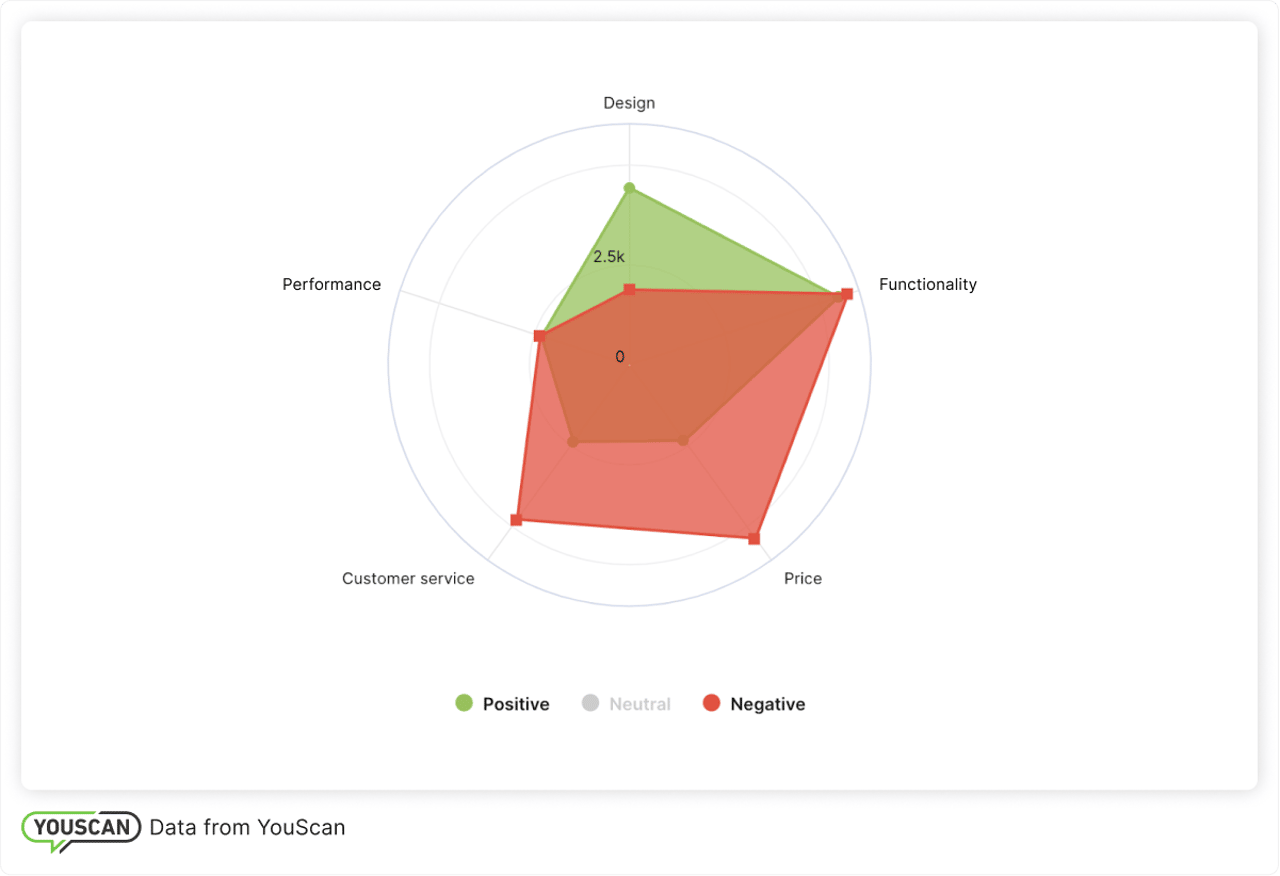

The new iPhone is predictably praised for its design, but what caused customer dissatisfaction? Superficial analysis shows that not only price, but also customer service and functionality disappointed social media users.
By mentioning customer service, clients usually mean rude stuff in the stores.
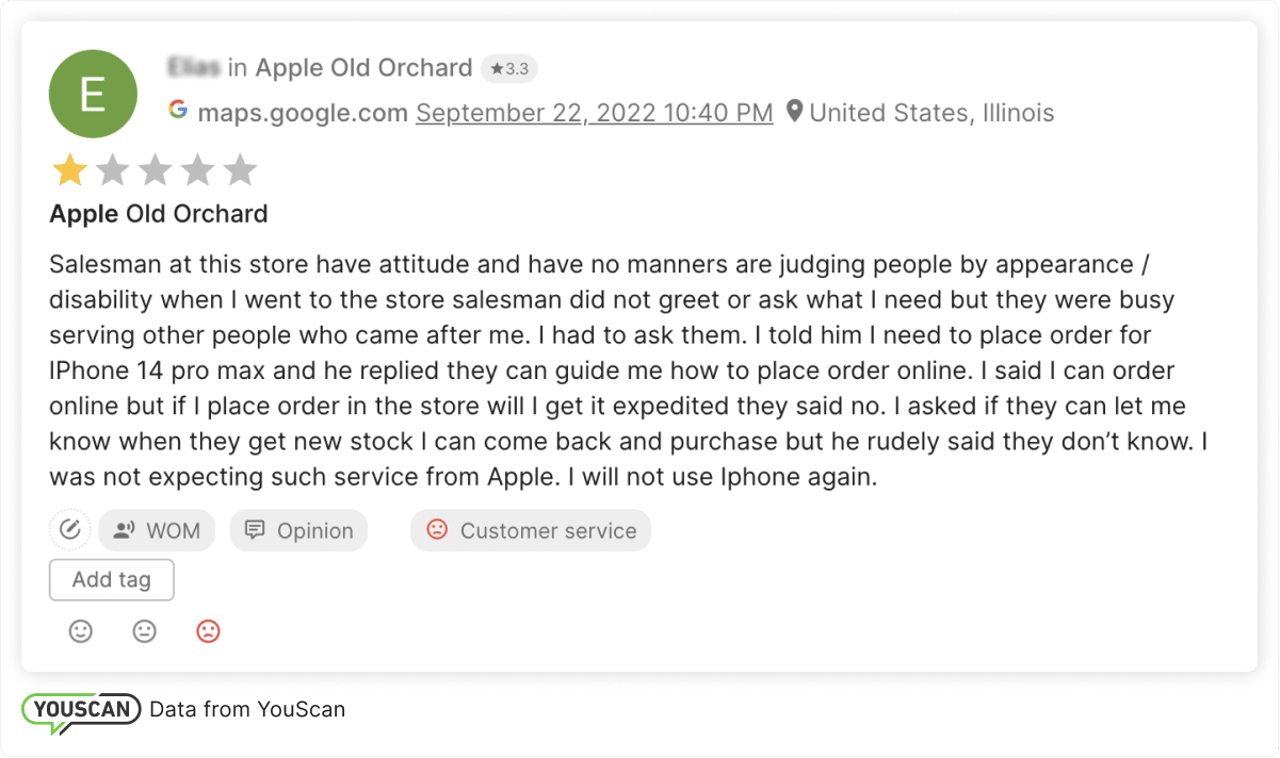

Regarding functionality, users face various problems that Apple's support could investigate – from hardware to software issues.

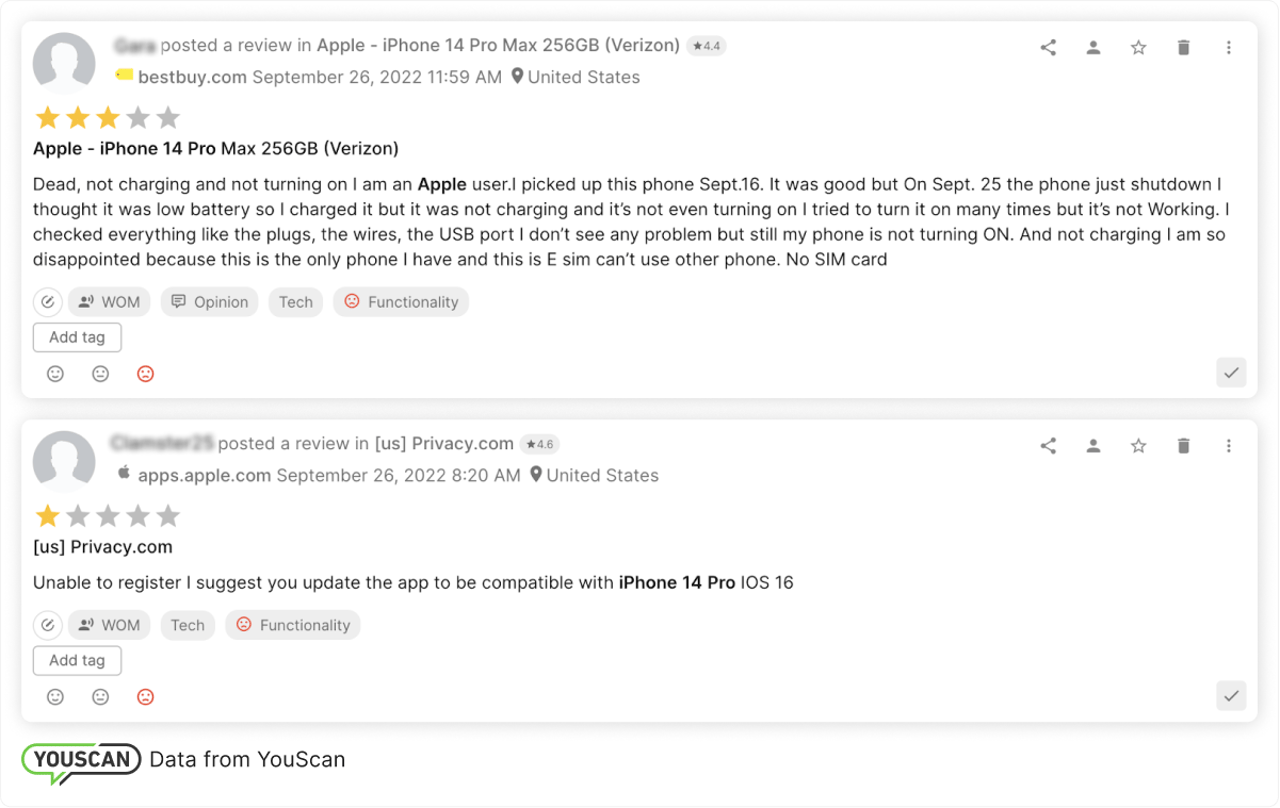
For brands, it is crucial to analyze consumer dissatisfaction and see how and why it was provoked. This process requires deep analysis of social media mentions and finding the reasons for customer frustration.
To make work with mentions easier, it is possible to tag every mention of the problem and share it with the department that is in charge of it. One more benefit of tags is that you can compare which issue provokes more complaints. In the case of the iPhone14, most of the clients are unsatisfied with the quality of service in stores.
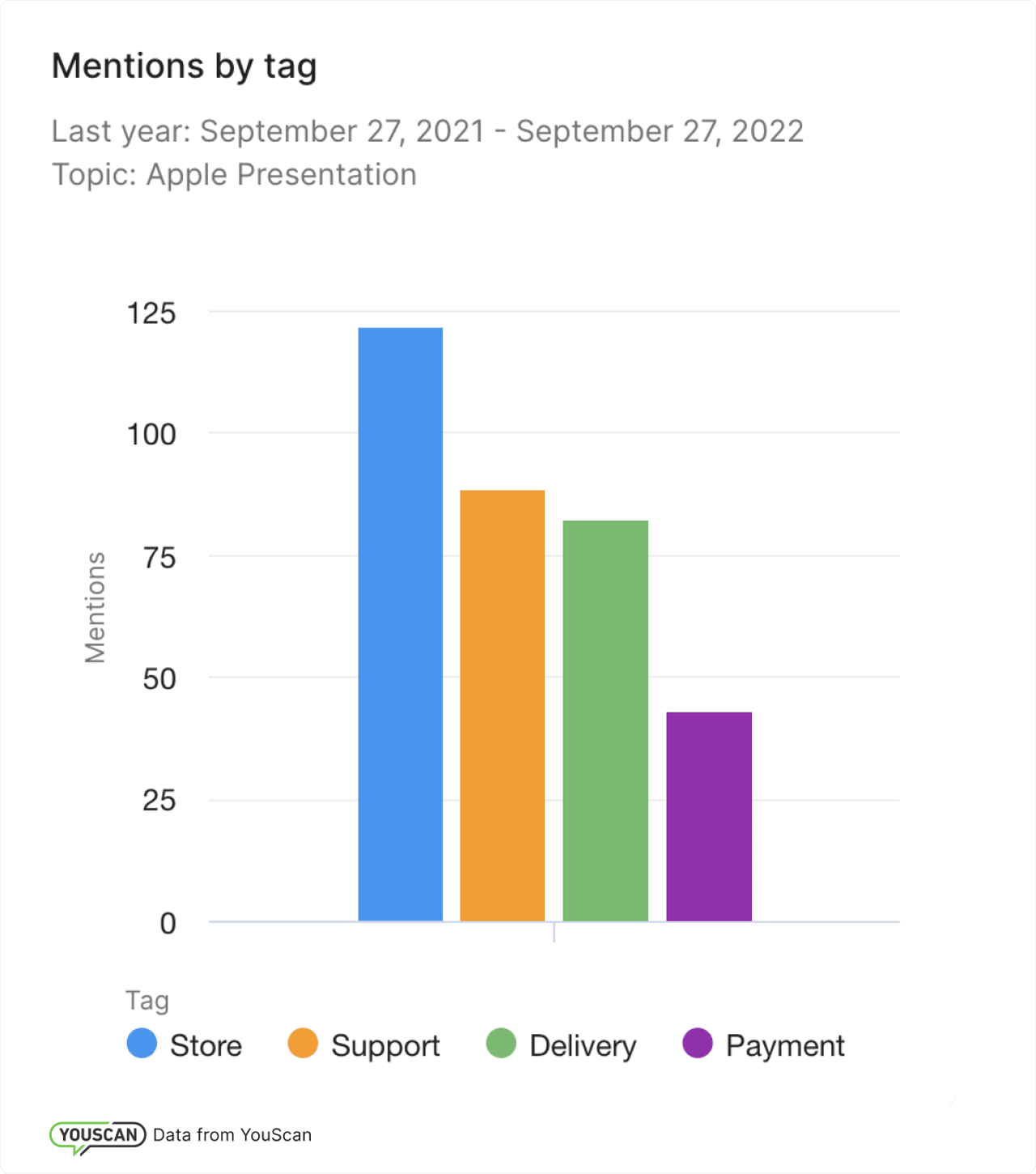

How to manage customer dissatisfaction?
Dissatisfied customers often share their negative experiences on social media. Usually, this causes a huge problem for brands as these mentions are available to a broad audience.
Act fast
Dissatisfied customers often share their negative experiences on social media. Usually, this causes a massive problem for brands as these mentions are available to a wide audience. Because of that, it is crucial to show a fast reaction. Efficiency kills two birds with one stone:
show the unhappy customer that you care and want to rectify the situation;
show his audience that you provide high-quality service and are ready to react to every mistake.
You can find Purina Australia's case below, a good example of rapid reaction: the brand replied in less than one working day.
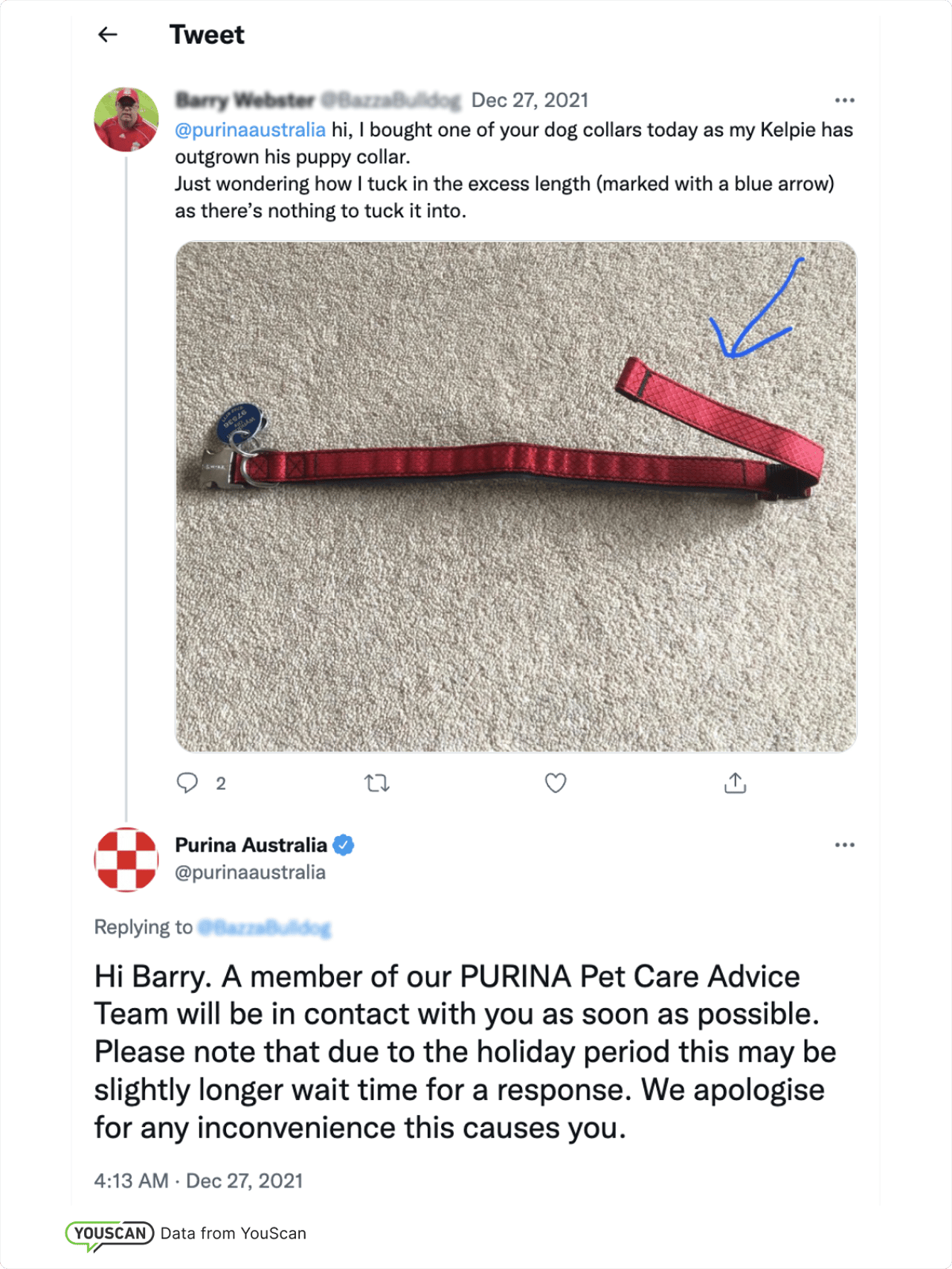

With social listening tools, you can collect not only mentions with your brand tags but also mentions without these tags. YouScan's capabilities allow you to collect data using logo and text recognition, so you wouldn't lose a sigh at the sight of your company mentions.
Make amends
Apologies and rectifying the problem are not always enough to keep a relationship with highly dissatisfied customers. If you want to make clients continue using your product or service, a promo code for the next purchase is a good option. With additional money or bonuses, people will be more motivated to interact with your company one more time. Make sure you won't disappoint this customer again!


Improve your product
If the number of negative mentions grows constantly, time to upgrade your product. Social media listening is a perfect tool for analyzing the reasons for customer dissatisfaction used by big brands. Most likely users will share the main issues with your product either it i a bad formula or packaging, customer service or delivery. You can find real cases on how social media data helped to improve products and services by learning our client’s cases.
If you are ready to learn how social media listening can help you improve your product – just request YouScan’s free demo and get actionable customer insights.


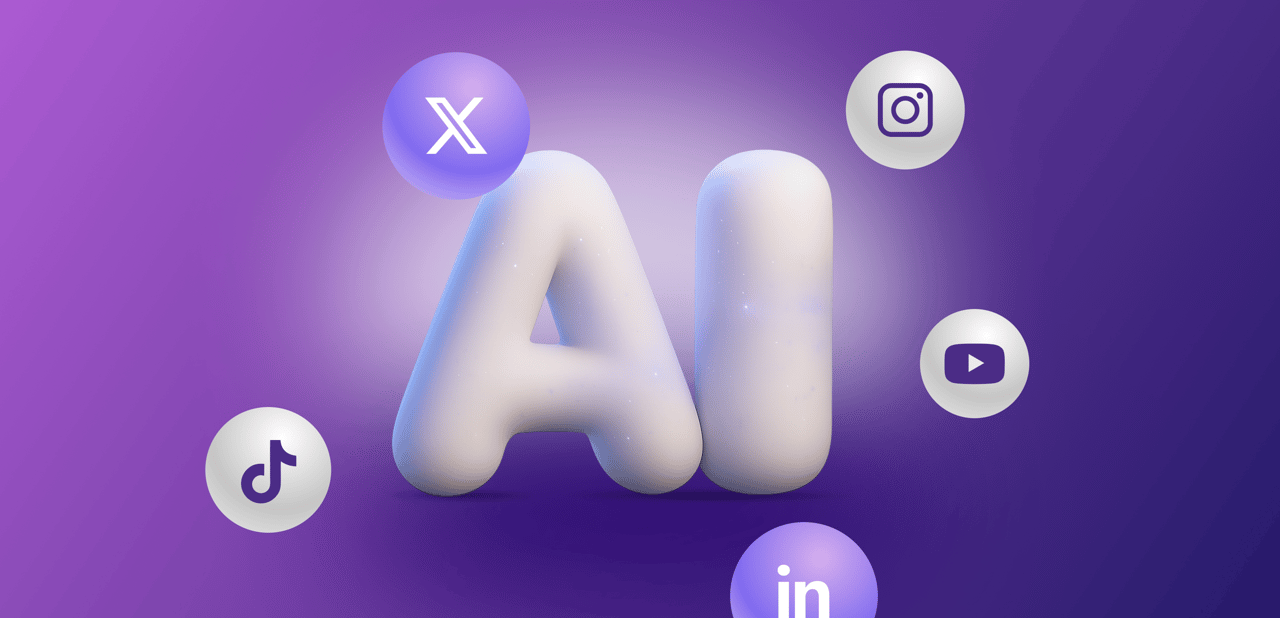
-(1).png)